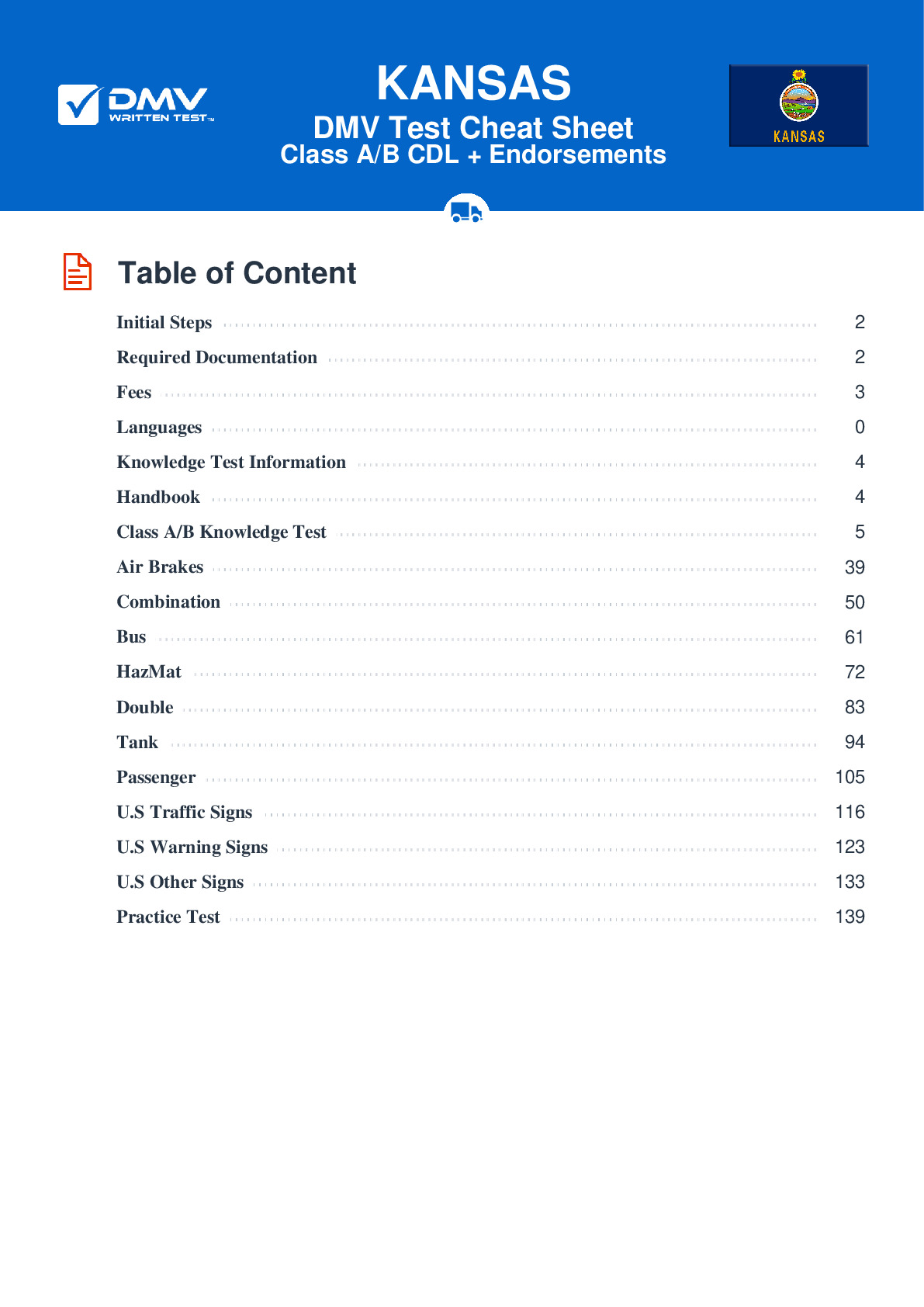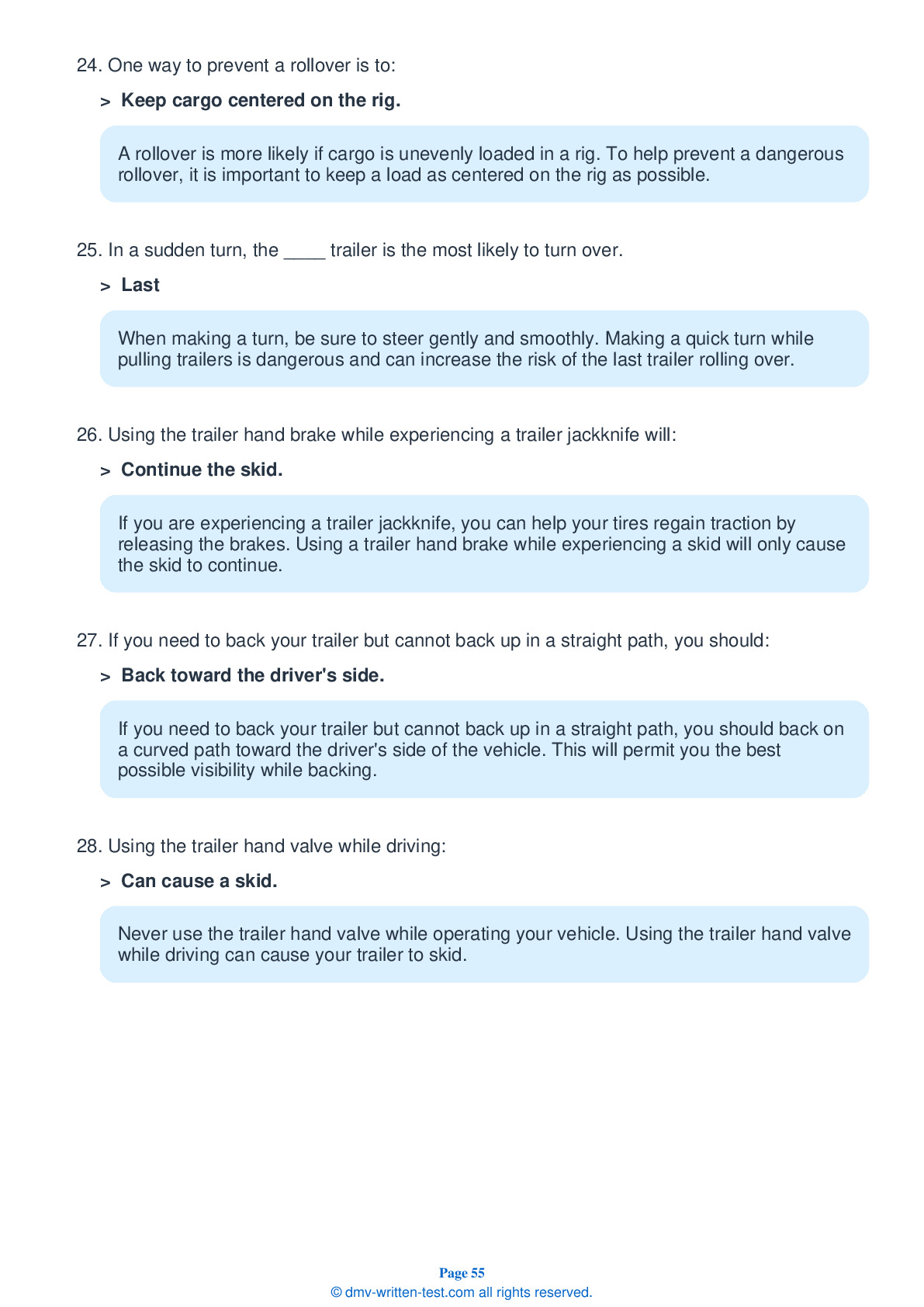Air Brakes
This endorsement is required for driving a vehicle with air brakes. To receive this endorsement, applicants must pass a written test. The test consists of 25 multiple choice questions. Each question has four answer choices. To pass, the applicant must answer at least 20 questions correctly. Test questions come from the Kansas Commercial Driver License Manual. Questions come from the chapter covering: Air Brakes. The Air Brakes endorsement may be used with the Class A, B or C CDL.
Number of Question
Passing Score
19. When using the controlled braking method in an emergency situation, you should:
Explanation
The controlled braking method for emergency stops involves applying the brakes as hard as you can without locking the wheels. Keep steering wheel movements small when braking in this way.
20. What can happen if the air pressure gets too low in an air brake system?
Explanation
Pressing and releasing the brake pedal unnecessarily can let air out faster than the compressor can replace it, reducing the available air pressure. If the air pressure in an air brake system gets too low, the brakes will no longer work.
21. The air compressor governor controls:
Explanation
In an air brake system, the air compressor governor controls when the air compressor pumps air into the air storage tanks.
22. During a static leakage test, the maximum leakage rate for a single vehicle with air brakes is ____ in one minute.
Explanation
When performing a static leakage test on a single vehicle with air brakes, the leakage rate should be no more than 2 psi in a minute. If air leaks from the air brake system at a quicker rate, the vehicle should not be driven because something likely needs to be repaired.
23. When only the tractor is equipped with an Anti-Lock Braking System (ABS):
Explanation
If a tractor is equipped with an Anti-Lock Braking System (ABS) but the trailer is not, the risk of jackknifing will be reduced and the driver should still be able to maintain steering control. If only the trailer is equipped with ABS, it is less likely that the trailer will swing out to one side.
24. Emergency brakes:
Explanation
All trucks, truck tractors, and buses must be equipped with emergency brakes and parking brakes. These brakes must be held by mechanical force.
25. Truck tractors with air brakes that were built on or after March 1, 1997 are equipped with:
Explanation




